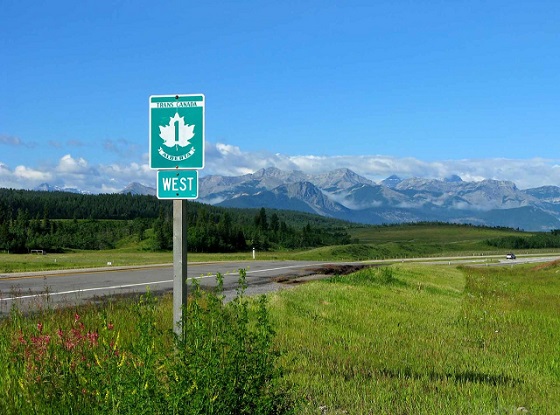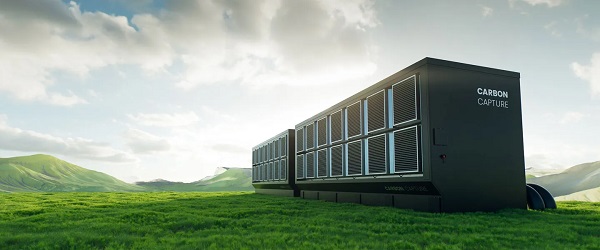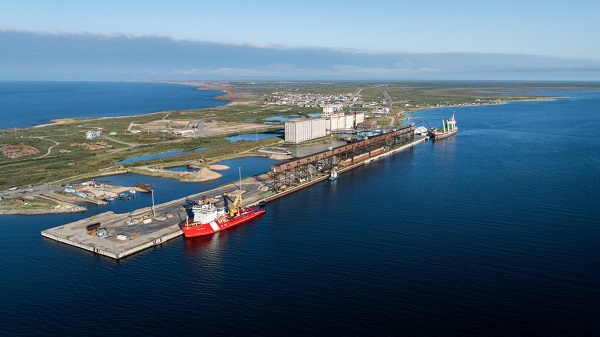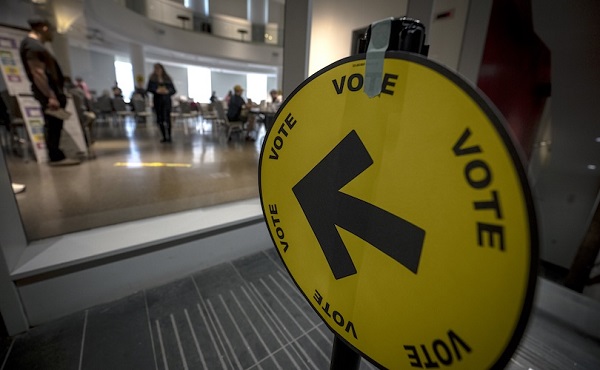Energy
What doubling the grid really means

From the Frontier Centre for Public Policy
” imagine if someone said in the next 25 years and 11 months, we must twin every single freeway, highway, grid road, street and alleyway, across the entire country, at the same time. And along the way, we have to replace up to 89 per cent of the existing infrastructure, as well, because it is no longer considered adequate “
Recently my daughter called me while on her way back from a Costco run in Regina, heading home to Weyburn.
She noted that it appears they are twinning the highway between Regina and Weyburn. Indeed, they are, I explained. And several years later, they’ll probably get it all the way to Weyburn. Maybe by the time I retire, if I live that long, they’ll get as far as Estevan.
Indeed, those timelines are likely pretty close to reality, if the twinning of Highway 16, from Saskatoon to Lloydminster, was any indication. I used to drive from Saskatoon to North Battleford to get the newspaper I was working for printed, with road construction for much of that. And it took several more years to complete the Battlefords to Lloydminster portion. I was fortunate enough to be present at the ceremony for that. It was significant enough that Premier Lorne Calvert came out.
Twinning a major highway is a substantial undertaking. Historically, Saskatchewan could usually only afford to work on three separate areas at a time, typically doing 20 kilometres per year in each stretch. That was all the provincial finances could handle.
By adding an additional two lanes, you are effectively doubling the capacity of that major piece of infrastructure. It’s not easy, not cheap, and not fast.
Now imagine if someone said in the next 25 years and 11 months, we must twin every single freeway, highway, grid road, street and alleyway, across the entire country, at the same time. And along the way, we have to replace up to 89 per cent of the existing infrastructure, as well, because it is no longer considered adequate.
You’d probably think they were living in a dreamland, or quite possibly stark raving mad.
And yet this is precisely what the federal government is proposing, nay, demanding, of Canadians from St. Johns to Victoria to Tuktoyaktuk.
In order to save the world from anthropogenic (manmade climate change) and attain a “Net Zero by 2050” economy, we must increase the size of the electrical grid by a factor of 2.5x. And for Saskatchewan and Alberta, who on any given day get up to 88 and 94 per cent of their power, respectively, from fossil fuels, they must also replace that existing gas and coal power generation with non-emitting sources, at the same time as they’re building out the truly massive expansion.
The first reference I saw of the federal Liberal government’s intentions of this was in the 2023 budget, which noted expanding the electrical grid by a factor of 2.2 to 3.4 times. By August, when they released the proposed Clean Electricity Regulations, the government seemed to settle on a factor of 2.5 times for the high demand scenario.
So in the highway twinning example, that would be adding three lanes, not two, to every two lane highway, grid road, street and alleyway. For an existing four lane highway, you would need to add six lanes. For a six lane freeway like Ontario’s 401, you’d need to add an additional nine lanes, finding the right of way space, concrete, rebar, gravel, and asphalt for all of this. Again, all at the same time, in 25 years and 11 months.
There are several thrusts that the federal government is pushing. First, by 2035, they want to totally eliminate gasoline and diesel from new light vehicle sales. There’s currently only eight retail hydrogen fueling stations listed by the federal government and Shell in the entire country. There could be more, but they’re not listed. Realistically this means battery-powered electric vehicles (EVs). But nearly all of those EVs will require charging at home each night (and especially during winter, pre-conditioning those batteries, keeping them warm).
So every residence in the country will require 30 amp chargers for cars, and 80 amp chargers for pickups.
But the government is also now moving away from fossil fuels for home, heating, too. This was indicative of Prime Minister Justin Trudeau’s pause on the carbon tax for home heating oil (primarily used in Atlantic Canada, although I grew up in a house with that system). To do so, the feds are offering “free” installations of heat pumps (which are wholly inadequate at -30 temperatures, let alone the -44 seen in Alberta in mid-January). And those could be up to another 50 amps, per heat pump.
And that’s just residential, never mind commercial or industrial.
The Clean Electricity Regulations are meant to force fossil fuel power generation to go away. And since wind frequently drops to nothing, and the sun goes down every day, the only real alternative is massive expansion of nuclear power across Canada. We’re talking small modular reactors by the dozen in Alberta, Saskatchewan, and to a lesser extent, Nova Scotia and New Brunswick.
On Jan. 30, SaskPower announced a formalized agreement with General Electric-Hitachi for small modular reactors. But when I asked how many they plan on building, the CEO wouldn’t say. But he did speak of increasing the provincial grid from 5,400 megawatt now to 13,000 to 15,000 megawatts.
Hydro Quebec just released their plans to double their grid. Yet, perhaps miraculously, they’re not saying how many, if any, new dams will need to be built.
This doubling of the grid (actually 2.5x, but that’s not easy to say), means we’re going to need not only additional generation, but transmission lines, distribution lines, back alley pedestals, and wiring to every home, business and factory in the country. Where the materials come from? The contractors and workers? Will Not In My Back Yard (NIMBY) be universally trampled on by eminent domain orders, for the good of the planet? Or will it be a continuation of Build Absolutely Nothing Anywhere Near Anything Syndrome (BANANAS)?
A very real example is the Trans Mountain Pipeline. The original was built in something like 16 months, from scratching dirt to oil flowing. The expansion is taking a hell of a lot longer. Work started in 2018, and it is still not done. Any change in the plan had to go back to the Canadian Energy Regulator. Some First Nations fought it every step of the way.
Now do this for every single piece of existing power infrastructure. Wrap your head around that for a minute.
This supposed energy transition, from fossil fuels to electric everything, does not work if you cannot build out the electrical infrastructure, everywhere, and essentially all at in the next 25 years and 11 months. Either the timelines need to be stretched to a generational scale, or more realistically, the whole concept needs to be entirely rethought.
As Saskatchewan Premier Scott Moe has said more than once, “We will not attempt the impossible when it comes to power production.”
Brian Zinchuk is editor and owner of Pipeline Online, and occasional contributor to the Frontier Centre for Public Policy. He can be reached at [email protected].
Business
Carney should rethink ‘carbon capture’ climate cure

From the Fraser Institute
In case you missed it amid the din of Trump’s trade war, Prime Minister Carney is a big believer in “carbon capture and storage.” And his energy minister, Tim Hodgson, who said it’s “critical to build carbon capture systems for the oilsands,” wants the Smith government and oilsands companies to get behind a proposed project (which hasn’t been unable to raise sufficient private investment) in Cold Lake, Alberta.
The term “carbon capture and storage” (or CCS) essentially refers to technology that separates carbon dioxide (CO2) from emissions and either stores it or uses it for other products. Proponents claim that CCS could replace other more ham-handed climate regulations such as carbon taxes, emission caps, etc. The problem is, like many (or most) proposed climate panaceas, CCS is oversold. While it’s a real technology currently in use around the world (primarily to produce more oil and gas from depleting reservoirs), jurisdictions will likely be unable to affordably scale up CCS enough to capture and store enough greenhouse gas to meaningfully reduce the risks of predicted climate change.
Why? Because while you get energy out of converting methane (natural gas) to CO2 by burning it in a power plant to generate electricity, you have to put quite a lot of energy into the process if you want to capture, compress, transport and store the attendant CO2 emissions. Again, carbon capture can be profitable (on net) for use in producing more oil and gas from depleting reservoirs, and it has a long and respected role in oil and gas production, but it’s unclear that the technology has utility outside of private for-profit use.
And in fact, according to the International Institute for Sustainable Development (IISD), most CCS happening in Canada is less about storing carbon to avert climate change and more about stimulating oil production from existing operations. While there are “seven CCS projects currently operating in Canada, mostly in the oil and gas sector, capturing about 0.5% of national emissions,” CCS in oil and gas production does not address emissions from “downstream uses of those fuels” and will, perversely, lead to more CO2 emissions on net. The IISD also notes that CCS is expensive, costing up to C$200 per tonne for current projects. (For reference, today’s government-set minimum carbon market price to emit a tonne of CO2 emissions is C$95.) IISD concludes CCS is “energy intensive, slow to implement, and unproven at scale, making it a poor strategy for decarbonizing oil and gas production.”
Another article in Scientific American observes that industrial carbon capture projects are “too small to matter” and that “today’s largest carbon capture projects only remove a few seconds’ worth of our yearly greenhouse gas emissions” and that this is “costing thousands of dollars for every ton of CO2 removed.” And as a way to capture massive volumes of CO2 (from industrial emission streams of out the air) and sequestering it to forestall atmospheric warming (climate change), the prospects are not good. Perhaps this is why the article’s author characterizes CCS as a “figleaf” for the fossil fuel industry (and now, apparently, the Carney government) to pretend they are reducing GHG emissions.
Prime Minister Carney should sharpen his thinking on CCS. While real and profitable when used in oil and gas production, it’s unlikely to be useful in combatting climate change. Best to avoid yet another costly climate change “solution” that is overpromised, overpriced and has historically underperformed.
Alberta
World’s first direct air capture test centre to open doors in Innisfail

From the Canadian Energy Centre
Deep Sky Alpha facility will trial technologies that suck CO2 from the sky
Innisfail, Alta. is set to host the world’s first test centre for technology that removes carbon dioxide directly from the air to fight climate change.
This June, Montreal-based Deep Sky completed construction of a $110-million carbon removal innovation and commercialization centre in the town about 120 kilometres north of Calgary.
It is a key piece of the company’s vision to build 100 large-scale facilities across Canada and become a pioneer in the emerging market for direct air capture (DAC) technology.
“As of this summer, we will begin not only carbon removal, which is actually sucking it out of the air through these very powerful fans, but also liquefying it and then putting it underground for storage,” Deep Sky CEO Alex Petre told CTV News.
Work began in August 2024 on the project known as Deep Sky Alpha, which aims to begin testing up to 10 different DAC technologies in real-world conditions. It is expected to be up and running this August.
The Government of Alberta is investing $5 million in the facility through Emissions Reduction Alberta.
Deep Sky’s facility will capture up to 3,000 tons of CO2 per year over the next 10 years, with room for future expansion.
Captured CO2 will be transported by tanker trucks about 200 kilometres north to Sturgeon County where it will be injected more than two kilometres below the surface into the Meadowbrook Carbon Storage Hub.
Operated by Bison Low Carbon Ventures, the project is the first approved under Alberta’s open-access carbon sequestration hub initiative and is expected to begin operations before year-end.
“We’re going to line up these eight units side by side and run them to see how they operate in the summer and in the cold of winter,” said Damien Steel, former Deep Sky CEO who continues to serve as a company advisor.
“We’ll be tracking everything to see how all these best-in-class technologies compare – what are their strengths and weaknesses – so that ultimately we can choose the best solutions to scale up for the major commercialization of carbon removal projects that are needed.”
Unlike typical carbon capture and storage (CCS) projects that scrub CO2 from the exhaust of heavy industrial facilities such as power plants, refineries, cement plants or steel mills, DAC utilizes different technology to remove much lower concentrations of CO2 directly from the atmosphere.
According to the International Energy Agency (IEA), there are 27 DAC plants operating worldwide, capturing almost 10,000 tonnes of CO2 per year. In order to reach net zero emissions by 2050, the IEA estimates DAC capacity must expand to more than 60 million tonnes per year by 2030.
Deep Sky selected Alberta for its test facility because of the province’s experience with CCS, including its advanced regulatory system for CO2 sequestration.
“To be successful at carbon removal you need three things: you need access to geologic storage, you need talent, and you need a reliable supply of renewable power to operate DAC facilities. Canada is blessed with these things, and Alberta especially has all of these attributes in spades,” Steel said.
Deep Sky Alpha is one of several clean tech projects underway in a five-acre industrial park in Innisfail as part of an economic diversification plan that was launched in 2022 to make the town a centre for energy innovation.
A municipal solar farm and a power plant that burns garbage and will be equipped with CCS to eliminate emissions are also under development.
Deep Sky says that more than 110 jobs were created during the construction phase of its Innisfail project and it will employ 15 people for annual operations.
Subsequent commercial plants it hopes to build across Canada will employ approximately 1,000 workers for construction and 150 for annual operations.
Steel said he expects the DAC test facility will become a destination for those looking to advance CCS projects around the world, showcasing Canadian expertise in the process.
“My hope is that not only will we learn and improve carbon removal technology, but we will also put Canada on the map in terms of being a place where innovation can thrive and this industry can work,” he said.
“It will be a place where corporate leaders, government officials and customers from around the world can come and see what direct air capture really is, how it works, and how Canada is the place to do it.”
-

 Education1 day ago
Education1 day agoWhy more parents are turning to Christian schools
-

 Addictions2 days ago
Addictions2 days agoAfter eight years, Canada still lacks long-term data on safer supply
-

 Alberta1 day ago
Alberta1 day agoOPEC+ is playing a dangerous game with oil
-

 Alberta1 day ago
Alberta1 day agoUpgrades at Port of Churchill spark ambitions for nation-building Arctic exports
-

 Business1 day ago
Business1 day agoIs dirty Chinese money undermining Canada’s Arctic?
-

 National2 days ago
National2 days agoLiberals push to lower voting age to 16 in federal elections
-

 COVID-191 day ago
COVID-191 day agoJapan disposes $1.6 billion worth of COVID drugs nobody used
-

 conflict1 day ago
conflict1 day agoOne of the world’s oldest Christian Communities is dying in Syria. Will the West stay silent?







